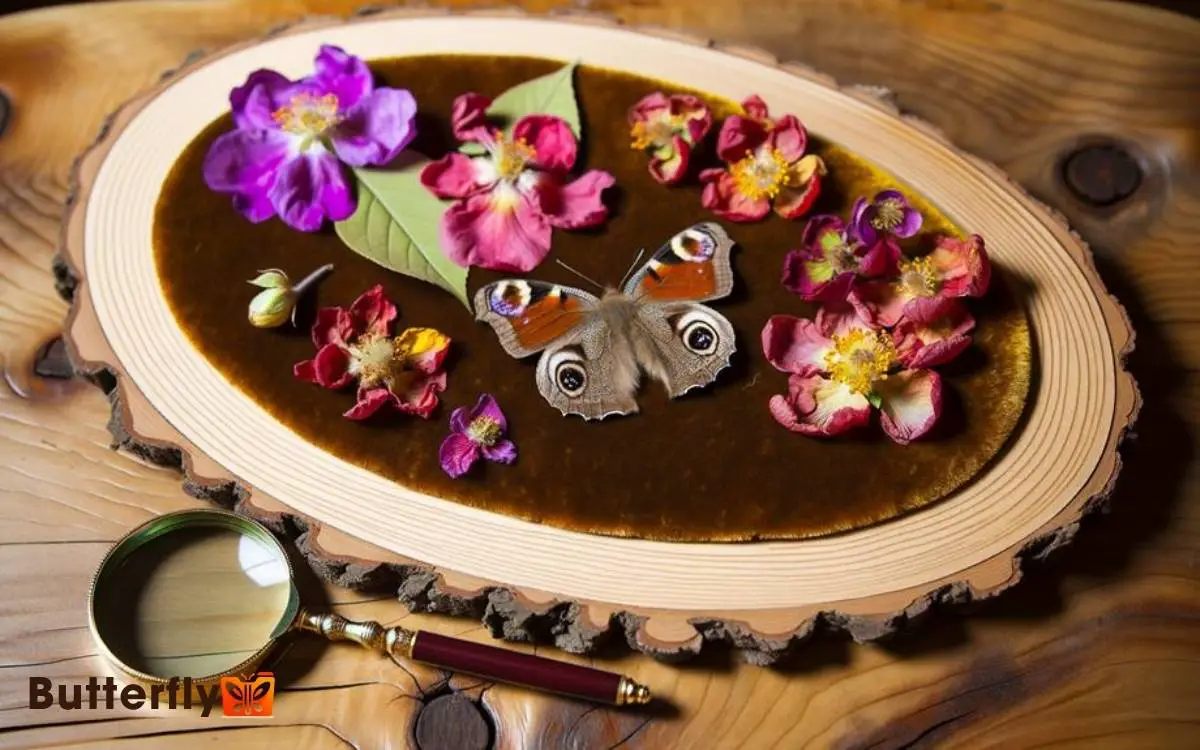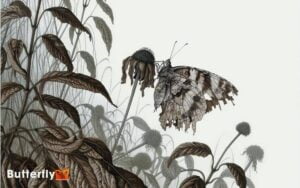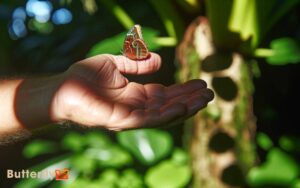How Do I Preserve a Butterfly? Step-by-Step Guide!
To preserve a butterfly, first select an intact specimen with vibrant coloration and no damage.
Relax its muscles in a humidity chamber, then carefully position it on a spreading board using entomological pins.
Secure wings with glassine strips. Maintain consistent temperature and humidity while drying to prevent mold. For mounting, position the butterfly symmetrically and secure with pins through the thorax.
For display, use an airtight case with UV-protective glass, away from direct sunlight and heat. Regularly check for pests and conditions to guarantee preservation. Follow these methodical steps, and you’ll master the intricacies of butterfly preservation.

Key Takeaways
Selecting a Specimen
When choosing a specimen, make sure the butterfly is intact and free from damage or decay. Select a butterfly with vibrant coloration and no missing body parts.
Examine the wings closely; they should be fully extended and free of tears or holes. Check the antennae and legs to guarantee they’re not broken or missing.
The butterfly’s body should be firm, not brittle or decomposed. Use fine-tipped forceps to handle the specimen gently, minimizing the risk of further damage. Avoid specimens that appear faded, as this indicates aging and potential fragility. Ensure that the wings are intact and free from excessive tears or missing scales, as these can affect both aesthetic and scientific value. If you’re researching how to kill a butterfly for collection purposes, it’s essential to use ethical and humane methods, such as a jar with ethyl acetate to minimize suffering. Proper preservation techniques will help maintain the specimen’s structure and coloration for long-term study or display.
Preparing the Butterfly
- To start preparing the butterfly, gently relax its muscles by placing it in a humidity chamber for a few hours. This step guarantees the specimen is pliable and easier to work with.
- Next, carefully remove the butterfly from the chamber using forceps to avoid damaging its delicate wings.
- Lay the butterfly on a spreading board, aligning its body along the central groove.
- Use entomological pins to secure the butterfly’s body, placing pins through the thorax, not the abdomen, to prevent distortion.
- Position the wings with the help of additional pins or paper strips, making sure they’re symmetrical and the forewings expose the hindwings properly.
Drying Techniques
Ensure the butterfly remains undisturbed while it dries to maintain its structural integrity and aesthetic quality.
- First, place the butterfly on a non-stick surface like wax paper. Use a spreading board to position its wings symmetrically.
- Next, secure the wings with glassine strips, ensuring the body remains centered.
For best drying results, maintain a consistent temperature of 75°F (24°C) and a humidity level below 50%. You can use silica gel or a desiccant chamber to expedite the drying process.
Check the specimen daily for any signs of mold or deformation. Typically, the drying process takes one to two weeks.
Ensuring proper ventilation will help prevent moisture buildup, essential for preserving the butterfly’s vibrant colors and delicate structure.
Mounting the Butterfly
Carefully position the butterfly on the mounting board, making sure its wings are spread symmetrically and its body is aligned centrally.
- Place the butterfly between tracing paper strips to hold the wings in place without damaging them.
- Use entomological pins to secure the body by inserting one pin through the thorax at an angle.
- Adjust the antennae symmetrically using fine-tipped forceps for precision.
- Gently manipulate the wings with a pin to achieve the desired position. Maintain even pressure to avoid tearing.
- Allow the butterfly to dry in a well-ventilated area for several days. Verify the wings’ position regularly to make certain they remain symmetrical.
Once dried, the specimen will be ready for the final steps of preservation.
Display and Storage
Displaying and storing your mounted butterfly requires precise conditions to maintain its condition and aesthetic.
For storage, uphold a consistent temperature and humidity level. Ideal conditions are 70°F (21°C) and relative humidity of 40-50%. Use silica gel packets to regulate moisture. Inspect periodically for pests, as they can cause significant damage.
| Display Condition | Storage Condition |
|---|---|
| Airtight display case | Consistent temperature |
| UV-protective glass | Relative humidity 40-50% |
| Away from sunlight | Use silica gel packets |
Conclusion
So, now you’ve become an unexpected expert in lepidopterology. Who knew capturing and preserving the delicate beauty of a butterfly would require such meticulous steps?
From selecting a specimen to the final display, you’ve navigated the intricate process with scientific precision.
Ironically, the very act of preserving these ephemeral creatures requires a permanence that nature never intended.
Yet, in your display, you’ve created a timeless piece of nature’s fleeting masterpiece.






